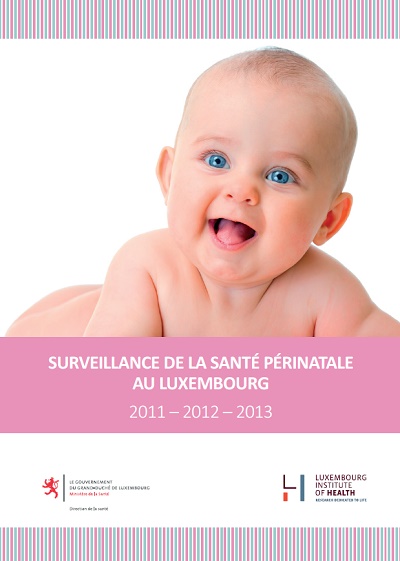
Yesterday, Wednesday 27 July 2016, Luxembourg’s Ministry of Health published the 2016 edition of the “Monitoring of Pre-Natal Health in Luxembourg 2011-2012-2013” report. The 2016 is a continuation of the triennial reports of the perinatal health surveillance system in Luxembourg, and is co-written by the Ministry of Health and the Luxembourg Institute of Health (LIH). Mothers’ and children’s health is a public health priority and is subject to regular monitoring based on indicators of pre-natal health that are validated internationally with evolutions over time. The pre-natal health surveillance system in Luxembourg is among the most efficient in Europe. It collects comprehensive data on births in the city via computer software, with the help of health of professionals. The medical surveillance of pregnant women is high in the Grand Duchy. 99.6% of women are attended by a health professional during pregnancy and over 93% are consulted in the first trimester of pregnancy. In parallel with the increase of the resident population by 2.3% on average over the three years studied, as well as an increase in the number of non-resident women who had just given birth in Luxembourg, we see an increase in the number of deliveries in the years 2011-2013. There is an overall growth rate of 7.3% over the three years, a trend that already emerged in 2000. The number of multiple births has also increased. In 2013, the number of multiple births was 20 per 1,000 births which places Luxembourg among the countries with a high rate of multiple pregnancies. This becomes clear when you compare it to other countries: the statistic in France was 17.4 per 1,000 in 2010, in Germany 18.5 per 1,000, and in Belgium 16.8 per 1,000. Regarding fertility treatments, the figures show an increase in the number of births resulting from assisted procreation (PMA): the figure was 4.2% in 2011 and 5.1% in 2013 (treatments abroad are included in the figures). For the first time, the average age of mothers is above 31 years. The trend is similar for fathers (the average age was 34.8 in 2013 and the median was 34 years). In contrast, a slight decrease is noticed in parents between the age of 15 and 19 years. The report also reveals a rather positive development about tobacco use during pregnancy. In 2011 and 2012, 16% of women reported smoking daily or occasionally during the first trimester of pregnancy. In 2013, this number was 15%. In the third quarter of the pregnancy, the rate was 13.2% in 2011, 13% in 2012 and 11.2% in 2013. This shows a decrease in the number of smokers between the first and third trimester of pregnancy: 21 8% of women who smoked in the first trimester did not smoke at all in the third. In general, smoking cessation during pregnancy has been increasing since 2009, with a strong improvement in 2013. It is also important to consider that 61.4% of women who quit smoking are pregnant for the first time. Although these rates show an improving trend, they do, however, remain high. This is especially taking into account that the number is likely to be under-reported, meaning that it is probable that the actual rates are even higher. Knowing the detrimental effects of smoking on newborns, the Department of Health deems it vital to continue to strengthen tobacco control campaigns already underway in the country. Few women reported consumption of alcohol on a daily basis during pregnancy. The rate was 8.6% in 2011 and decreased to 5.6% in 2013. This decrease can also be explained by the "0% alcohol during pregnancy" launched by the Ministry of Health. However, as with tobacco use, there is a certain bias to take into account. It is likely that there are cases of under-reporting here also. When it comes to alcohol consumption, the use of tobacco and/or other substances, it remains a priority to develop awareness initiatives to encourage a complete abstinence from these substances during pregnancy. In Luxembourg, the caesarean rate is higher than 30%. This rate reached 31% in 2011, 30.8% in 2012 and 30.5% in 2013. A working group, composed of obstetrician-gynecologists, pediatricians, neo-natologists and midwives was set up to closely analyse this rate. The work carried out resulted in the establishment of national guidelines on the indications for the caesarean section. These are recommendations that have been validated by the Scientific Council in the field of health and formalised in July 2014. In order to promote and support an informed choice for prospective parents, an informative brochure on patterns of births was produced the same year.








